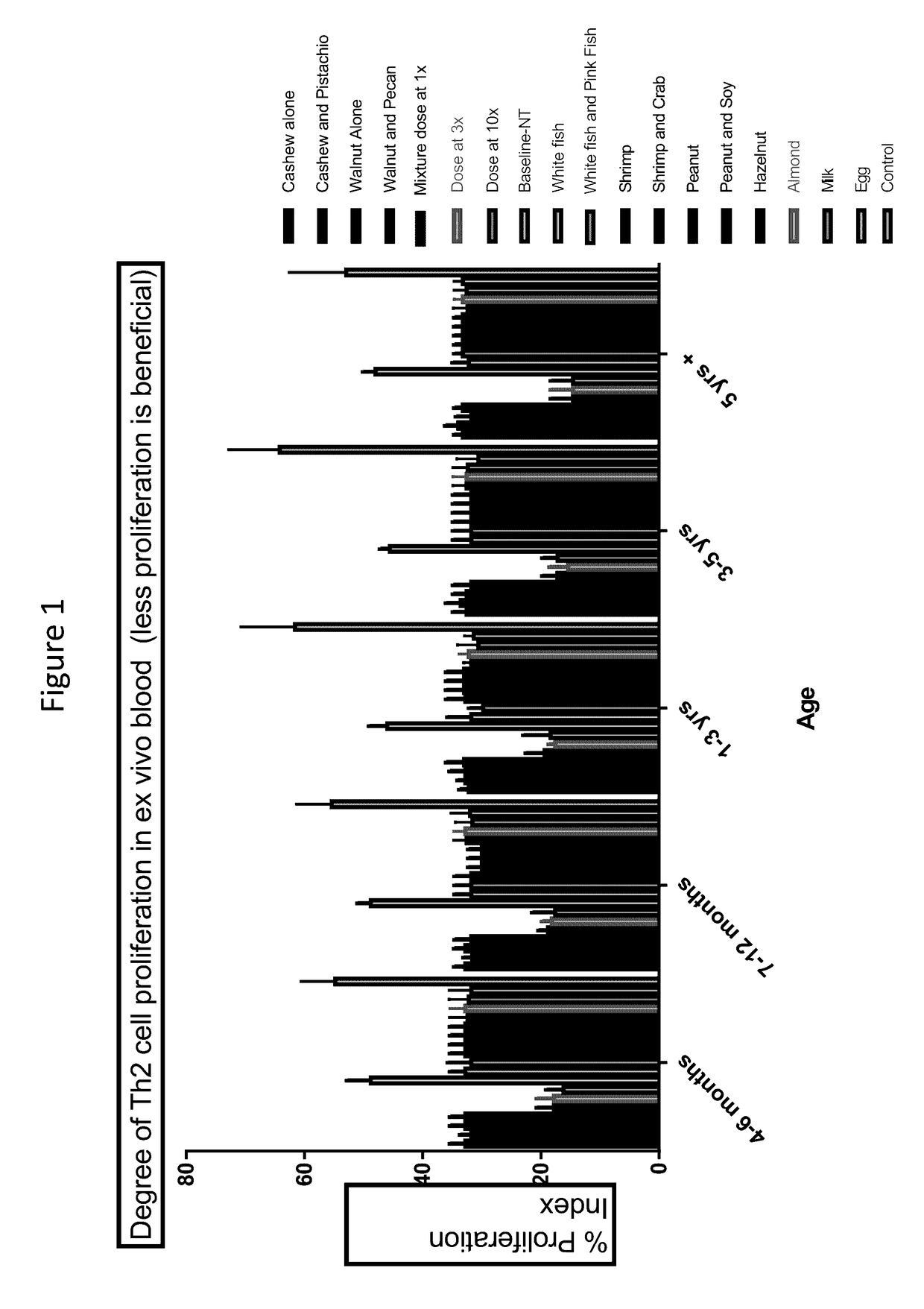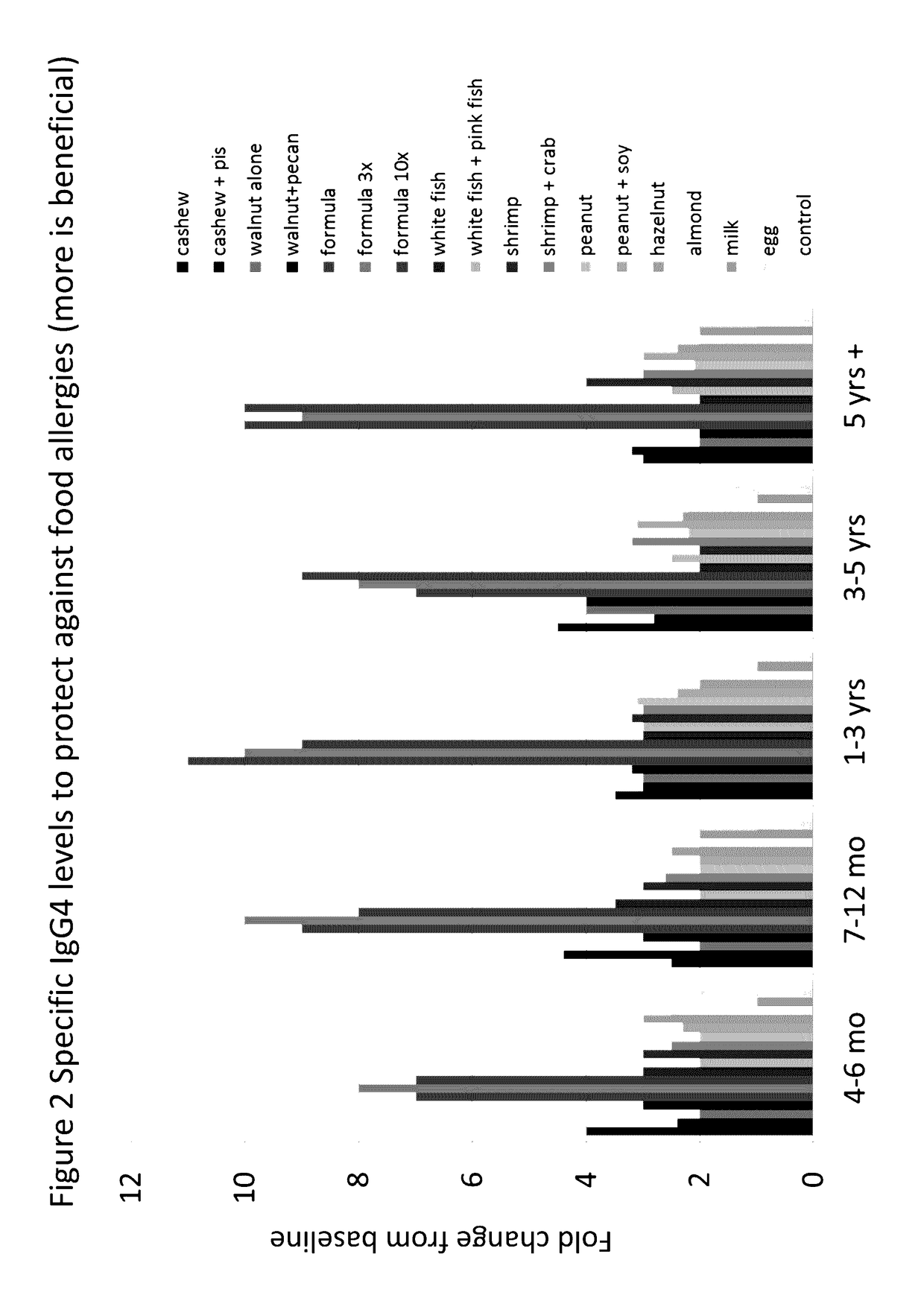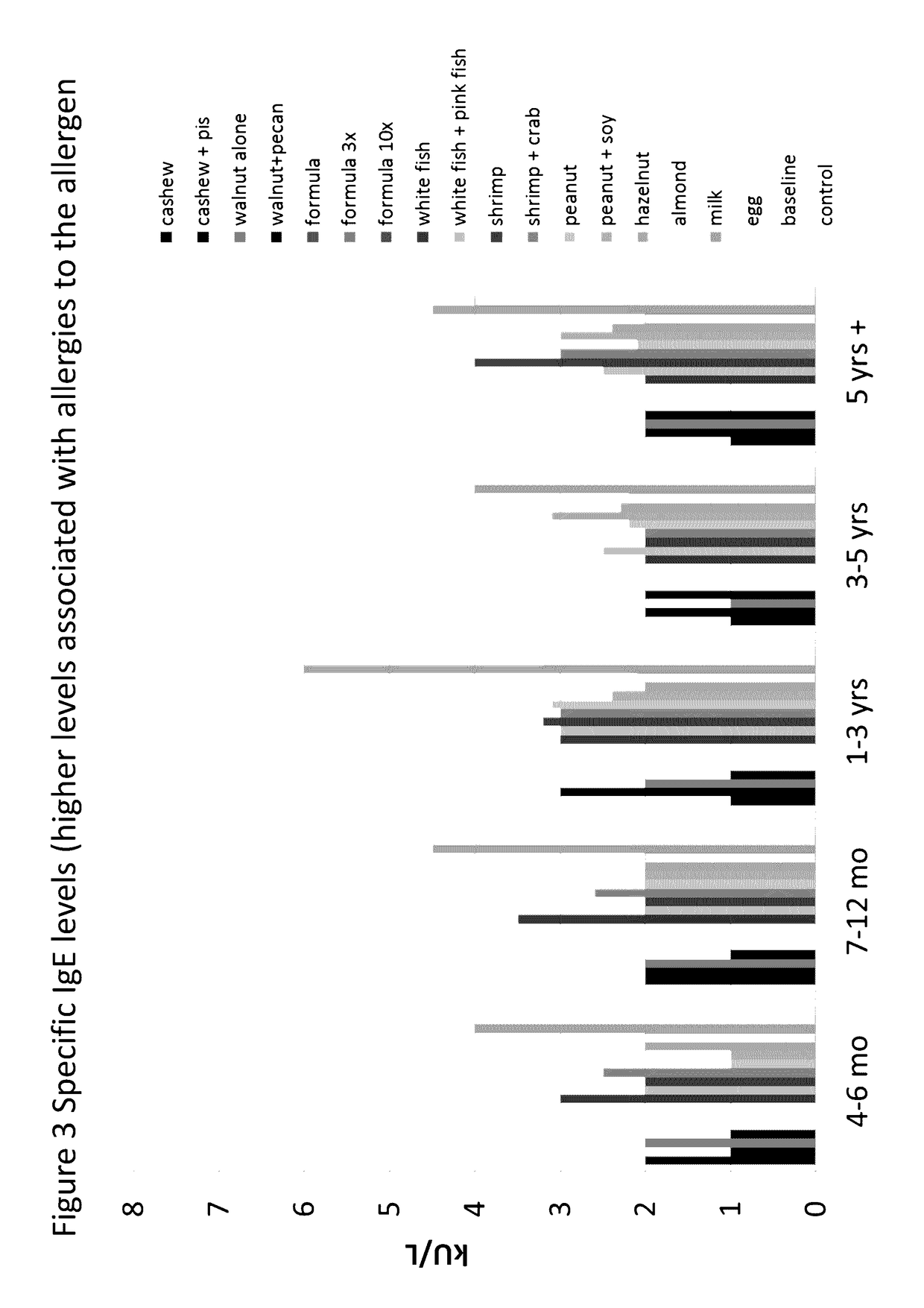Mixed allergen compositions and methods for using the same
a technology of allergen compositions and mixtures, applied in the direction of antibody medical ingredients, oil/fat/waxes non-active ingredients, unknown materials, etc., can solve the problems of life-threatening anaphylactic reactions, potentially death, and deaths that occur every year
- Summary
- Abstract
- Description
- Claims
- Application Information
AI Technical Summary
Benefits of technology
Problems solved by technology
Method used
Image
Examples
example 1
ergen Assay #1
Study Design and Population / Allergen Treatment
[0070]For each allergen or allergen mix listed below (the allergen groups), five subjects from each of five different age groups were fed a total of 300 mg of the allergen or allergen mix daily for one year. The only exceptions are for Formula 1 at 3× (i.e., 3× mix) and Formula 1 at 10× (i.e., 10× mix), in which the subjects were fed 900 mg and 3,000 mg of the formula on a daily basis, respectively. Allergen mixes were formulated at a 1:1 ratio. Thus, for an allergen mix with 2 allergens, the mix would include 150 mg of each. Five subjects were included in each age group that were not fed an allergen (Not Treated, or NT group, listed last in FIGS. 1-3).
[0071]The following 18 groups were randomized equally. Children ate (daily) either 1) cashew alone, 2) cashew and pistachio, 3) walnut alone, 4) walnut and pecan, 5) a protein mix containing equal parts walnut, hazelnut, shrimp, salmon, hen's egg, cow's milk, peanut, cashew, ...
example 2
ergen Assay #2
Study Design and Population / Allergen Treatment
[0122]Infants and children were seen in a research setting from 4 weeks old to 3 years of age. A single allergen or allergen mix supplement was consumed orally daily for one year. Subjects were fed a total of 300 mg of a single allergen or allergen mix daily for one year. The only exceptions are for Formula 1 at 3× (i.e., 3× mix) and Formula 1 at 10× (i.e., 10× mix), in which the subjects were fed 900 mg and 3,000 mg of the formula on a daily basis, respectively. Allergen mixes were formulated at a 1:1 ratio. Thus, for an allergen mix with 2 allergens, the mix would include 150 mg of each. Thirty subjects were included that were not fed an allergen (control group listed).
[0123]There was similar distribution of age and sex, and all children were breast fed for at least the first 4 months of life. There was similar distribution of high risk and low risk for food allergy (i.e. high risk are those infants born to a family with ...
example 3
ic Applications of Mixed Allergen Compositions
[0146]The mixed allergen compositions disclosed herein will be further tested for their ability to treat or prevent a range of allergic diseases, e.g., asthma, atopic dermatitis, allergic rhinitis, allergic conjunctivitis, food allergies, insect allergies, or drug allergies.
[0147]The mixed allergen compositions will be given to subjects via different routes, e.g., orally, mucosal, subcutaneously, or cutaneously. Therapy will be daily or weekly, starting at small amounts (about 1 mg or less). As appropriate, it will be possible to stay on the same amount or increase by 5-100% each week, over time, to larger amounts (about 300 mg or higher). Blood from subjects will be collected at baseline and then during and after therapy. Biomarkers would be predicted to show improved immune balance and immune protection against allergy inflammation. For example, Th2 proliferation and / or IgE to the antigen would decrease and IgG4 could increase over tim...
PUM
| Property | Measurement | Unit |
|---|---|---|
| Fraction | aaaaa | aaaaa |
| Fraction | aaaaa | aaaaa |
| Length | aaaaa | aaaaa |
Abstract
Description
Claims
Application Information
 Login to View More
Login to View More - R&D
- Intellectual Property
- Life Sciences
- Materials
- Tech Scout
- Unparalleled Data Quality
- Higher Quality Content
- 60% Fewer Hallucinations
Browse by: Latest US Patents, China's latest patents, Technical Efficacy Thesaurus, Application Domain, Technology Topic, Popular Technical Reports.
© 2025 PatSnap. All rights reserved.Legal|Privacy policy|Modern Slavery Act Transparency Statement|Sitemap|About US| Contact US: help@patsnap.com



